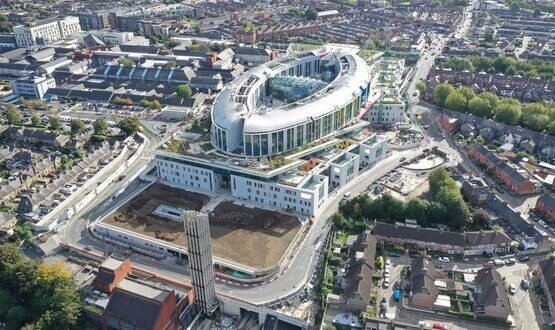Budget 2021: Digital healthcare leaders react to NHS funding pledges
- 27 October 2021

Digital healthcare leaders have welcomed the government’s £2.1bn commitment to NHS IT in today’s budget but said further detail is needed on how the funding will be spent.
Chancellor Rishi Sunak confirmed the funding for IT upgrades and digital health technology in today’s (October 27) budget.
The funding will cover “innovative use of digital technology so hospitals and other care organisations are as connected and efficient as possible”.
The NHS IT funding forms part of a wider £5.9billion capital funding to help the NHS clear the record high backlog of patient’s waiting for treatment, invest in new equipment such as MRIs and CT machines, and invest in IT upgrades such as faster broadband.
Matt Cox, managing director of Better in the UK and Ireland, said: “We await the detailed guidance of how the additional £2.1bn tech funding will be spent but I hope that, as we have seen with past capital funding, it isn’t wasted on solutions that create more vendor lock-in.
“Nor do I hope it’s a catalyst for further conversations around a national one-size-fits-all platform. Instead, I encourage trusts to instigate a widespread innovative data-centric approach, enabling an eco-system of user centred applications built on open platforms.”
David Hancock, healthcare executive advisor at InterSystems, said funds need to be focused on “improving productivity and patient safety”.
“The pressure points are the actual treating of patients, so perhaps the first area of focus should not be diagnostics and imaging, which has been discussed recently, but rather speeding up patient flow from admission to treatment to discharge.
“This includes unplanned admissions through ambulances and A&E. At the heart of this, we need solutions that are interoperable – there must be safe and effective sharing of information between systems which improve productivity and patient safety.”
Hancock warned the NHS may not need capital expenditure and that upgrades to digital technology and IT will still incur running costs.
“Any discussion on digital technology investment must be prefaced with the type of investment that is provided. This is especially as much more IT is being bought as a subscription service from public and private cloud providers.”
Hancock’s and Cox’s comments were echoed by Andy Meiner, managing director and chief commercial officer of Silverlink, who said the funding needed to be supported by investment in infrastructure and people.
“The additional funding will only take the service so far if it isn’t supported by similar investment in other infrastructure, people, and crucially social care capacity,” he said.
“I see the bottlenecks in the system, which mean patients end up readmitted to hospital due to the lack of capacity in community and social care. The investment in the basics, that still, many care providers need, must release efficiencies in the whole system if it is going to have the impact desired.
“That means integrated clinical and non-clinical systems that make it easy for carers, whatever the setting, to share information for the benefit of the patient.”
Avoid ‘use it or lose it’
Other leaders expressed concern trusts would be pressured to “use it or lose it”.
Rachel Murphy, chief executive of Difrent, said: “While any new additional funding for the NHS is welcome, the current lack of detail surrounding how this latest tech funding will be provided, shared, and managed is concerning.
“The digital transformation seen in the last 18 months has been largely reliant on agile software-as-a-service solutions to longstanding problems.
“The £2.1bn capital funding won’t help sustain this, nor will it help accelerate the transition to cloud-based technology; instead, I fear trusts will be pressured to ‘use it or lose it’ and short-term decisions will be made as a result.”
Invest in digital triage
Dr Murray Ellender, practicing GP and co-founder of eConsult said the “only way” to provide better patient experience in the NHS is to invest in digital triage.
“Whilst it’s positive news that £2.1bn has been earmarked for ‘improving IT and digital technology’, the only way to give the patients who need it a better and more direct route to care is by investing in digital triage.
“By investing in triaging the needs of patients at the beginning of their healthcare journeys into general practice, A&E or outpatients, we can get patients to the right clinician, at the right time, first time and every time. This will create a digital eco-system for patients, improving patient outcomes and driving efficiency throughout the system.
“Of course, cash injections like these may help with easing the immediate blow, but our healthcare system desperately requires a careful overhaul. Part of this means extra budget into assistive technologies intended to free up resources by empowering the clinician to focus on delivering more effective and efficient healthcare journeys for the patient, and to spot the early signs of potentially critical conditions, fast-tracking those patients to the right point of care.”
Dr Ellender recently spoke to Digital Health about the pressures facing GPs during the pandemic, and whether technology had added to their workloads. You can read the feature here.




